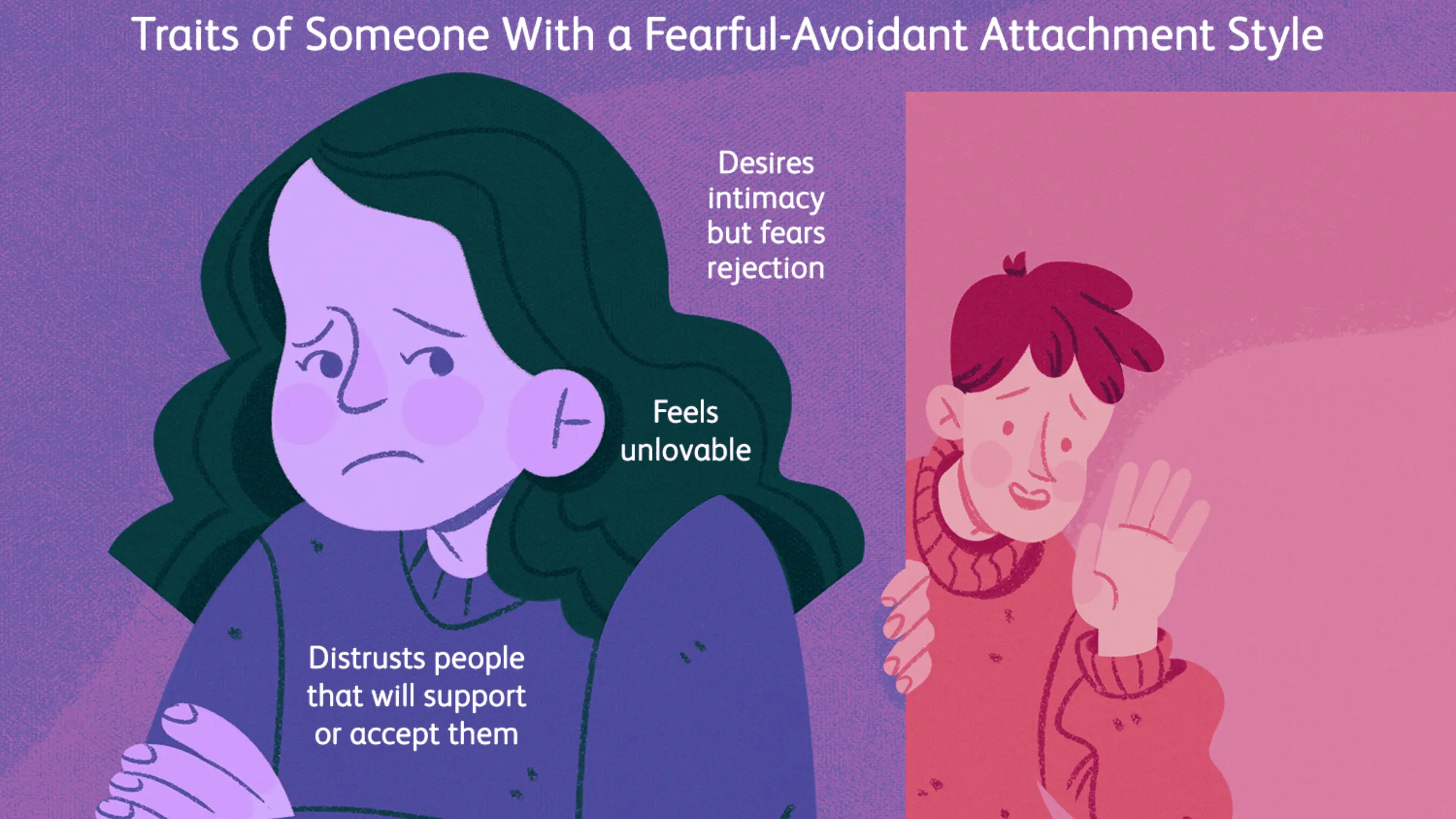Attachment styles influence how we form and maintain relationships. This article will explore how a Fearful Avoidant Attachment Style Can Affect Your Life characteristics, development factors, signs, and the impact of the menacing avoidant attachment style on relationships. We will also discuss strategies for healing and overcoming this attachment style to build healthier connections.
Introduction to Fearful Avoidant Attachment Style
The fearful-avoidant attachment style is characterized by a conflicting desire for both connection and independence, often resulting in fear of intimacy and avoidance of close relationships. Individuals with this attachment style may experience emotional turmoil, find it challenging to trust others, and struggle with forming secure bonds.
Understanding Attachment Styles
What is an Attachment Style?
Attachment style refers to how individuals perceive and respond to emotional closeness, primarily formed during early childhood experiences with caregivers. These attachment styles shape our expectations and behaviors in relationships throughout our lives.
The Four Attachment Styles
There are four main attachment styles: secure, anxious-preoccupied, dismissive-avoidant, and fearful-avoidant. While secure attachment promotes healthy relationships, the other three styles involve varying degrees of insecurity and difficulties in forming and maintaining connections.
Characteristics of Fearful Avoidant Attachment Style
Fear of Intimacy and Avoidance
Individuals with a fearful avoidant attachment style often experience an intense fear of intimacy. They may feel overwhelmed by emotional closeness and try to maintain distance to protect themselves from potential rejection or harm.
Conflicting Desires for Connection and Independence
One of the critical characteristics of the fearful-avoidant attachment style is the conflicting desires for connection and independence. These individuals crave closeness and harmony but also fear it, leading to a constant push-pull dynamic in their relationships.
Emotional Turmoil and Unpredictability
Fearful avoidant individuals often experience emotional turmoil and unpredictability. They may struggle with managing their emotions and have difficulty regulating their relationship reactions, resulting in a rollercoaster of feelings and behaviors.
Developmental Factors Influencing Fearful Avoidant Attachment Style
Early Childhood Experiences
Early childhood experiences play a crucial role in the development of attachment styles. In the case of fearful avoidant attachment, incidents such as inconsistent caregiving, neglect, or abuse can contribute to the formation of this style.
Traumatic Events
Traumatic events, such as loss or abandonment, can also influence the development of a fearful avoidant attachment style. These events can create deep-seated fears and anxieties around relationships and emotional vulnerability.
Inconsistent Caregiving
Inconsistent caregiving, where the caregiver’s availability and responsiveness are unpredictable, can lead to confusion and insecurity in children. This inconsistency can contribute to the fearful avoidant attachment style as individuals learn to be cautious and self-reliant to protect themselves.
Signs and Behaviors of Fearful Avoidant Attachment Style
Difficulty Trusting Others
Fearful avoidant individuals often find it challenging to trust others, especially in close relationships. They may be highly skeptical and constantly question others’ motives and intentions.
Fear of Rejection and Abandonment
A deep-seated fear of rejection and abandonment is a common characteristic of the fearful avoidant attachment style. Individuals with this attachment style may constantly worry about being rejected or abandoned by their partners or loved ones.
Push-Pull Dynamic in Relationships
Fearful avoidant individuals often engage in a push-pull dynamic in their relationships. They may alternate between seeking closeness and connection and pulling away to create distance, leading to confusion and frustration in their partners.
Impact of Fearful Avoidant Attachment Style on Relationships
Challenges in Intimate Relationships
Fearful avoidant attachment style can present significant challenges in intimate relationships. The fear of intimacy and avoidance of emotional closeness can prevent these individuals from fully engaging and connecting with their partners, creating emotional distance and dissatisfaction.
Communication Issues
Communication problems often arise when one partner has a fearful avoidant attachment style. Their difficulty in expressing emotions and needs and their fear of rejection can hinder effective communication and understanding.
Difficulty Forming Secure Bonds
Fearful avoidant individuals may struggle to form secure bonds with their partners. Their fear and avoidance of intimacy can prevent the development of a deep and trusting connection, leading to feelings of loneliness and dissatisfaction.
Healing and Overcoming Fearful Avoidant Attachment Style
Self-Awareness and Reflection
Developing self-awareness is crucial for healing and overcoming a fearful avoidant attachment style. By understanding their attachment patterns and the underlying fears and anxieties, individuals can begin to change their behaviors and beliefs consciously.
Seeking Therapy and Support
Therapy can be beneficial for individuals with a fearful avoidant attachment style. A qualified therapist can provide guidance, support, and tools to navigate the challenges associated with this attachment style, helping individuals develop healthier relationship patterns.
Building Healthy Relationships
Building healthy relationships requires effort and a willingness to challenge old patterns. By practicing open communication, vulnerability, and emotional regulation, individuals with a fearful avoidant attachment style can create secure and fulfilling connections.
Conclusion
The fearful-avoidant attachment style can significantly impact an individual’s ability to form and maintain healthy relationships. However, with self-awareness, therapy, and a commitment to personal growth, individuals with this attachment style can heal and overcome their fears, leading to more fulfilling and secure connections.

